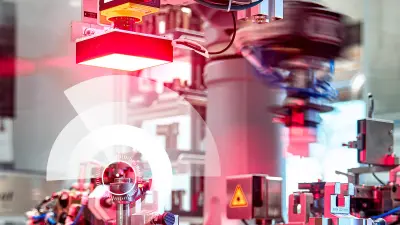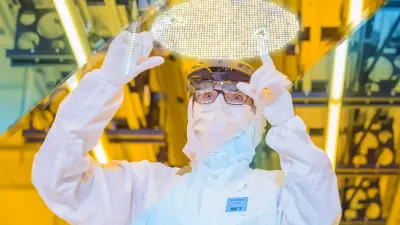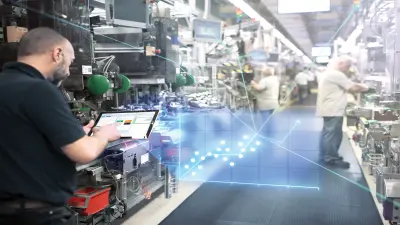Allow me, the AI Analytics Platform
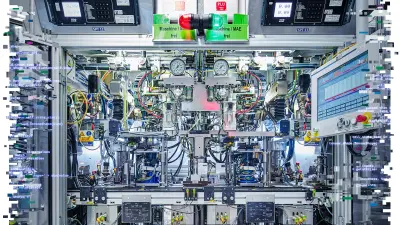
Bolt circumference: check. Drill hole diameter: check. Spring winding: correct… Oh, hello. I’m the Artificial Intelligence Analytics Solution from Bosch. As software, I’m already in use on over 1,400 production lines worldwide. My job? To analyze huge amounts of data generated in Bosch’s highly automated and connected manufacturing. With my analytical skills, I can find the causes of quality problems in the production of a wide variety of products. This allows my Bosch colleagues to intervene immediately and optimize production on an ongoing basis. But first things first. Let’s take a trip to Bamberg, Germany — an excellent location to demonstrate how I work directly on-site.
Optimizing manufacturing
The Bosch plant in Bamberg is actually the company’s largest manufacturing site in Germany. This has been a manufacturing site since 1939 — and the plant has always moved with the times: it is one of the most modern plants in the world — highly automated and truly exceptional, having won an Industry 4.0 Award just last year. The associates here in Bamberg have a wealth of expertise in powertrain technology for cars, and now they are also applying their skills to the construction of stationary and mobile fuel cells. This is one of the most important technologies for the transition to alternative energy!
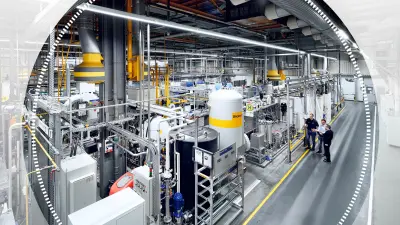
The Bamberg site has manufacturing facilities with over 1,000 workstations for the assembly, production, and testing of individual Bosch components. Each of these stations is equipped with numerous sensors. This is where my data feed comes from: all the information these sensors send — both process and quality data — is collected and transferred to a data warehouse system. And that’s where my work begins. Using data mining, with the help of special data visualizations and artificial intelligence, I can draw new insights from this data for my colleagues in record time. You can’t see me. As an IT system, I’m directly connected to the production lines and work entirely in the background.
1 billion
is how many lines of data I can read out and analyze per day. For context: one million lines of data equal roughly 18,000 printed A4 pages.
Measuring, looking, feeling — analyzing
Tiny engine and machine components are built in Bamberg. This requires absolute precision, because micrometer deviations in individual components often determine the quality along the entire production line. Here, too, countless sensors work together to document the assembly process. Among other things, they measure the exact size of each component, the torques and rotation angles of all screws used, and even temperatures in the production process. And then there are what are known as power knives. These devices check the force with which two components are attached to each other. Here again, this calls for the highest precision: to avoid possible damage, a certain value must not be exceeded. In addition, I receive data from cameras that check each individual assembly step and pass all information to me.
All this measuring, feeling, and seeing that my sensory helpers are doing really adds up. Within 24 hours, I process about 1 million data messages. I’m supported in this by artificial intelligence, which knows all the standards for our production steps by heart and can immediately spot when deviations from them occur. That way, we can ensure that no faulty components make it off the line.

The AI Analytics Platform is our top-of-the-range reading glasses for highly automated manufacturing. It makes terabytes of data readable in a matter of seconds.
Data feed in the test line

After the assembly line, all finished components make their way to the test line, as it’s known, where they are put through their paces — or, we might say, through their angles, windings, and function. What exactly does this mean? Every function that the finished product must perform for the customer undergoes practical testing. This happens at a total of seven test stations, each featuring five test points. Again, countless sensitive sensors per station help me collect data here.
About 40 percent of all data from the Bamberg plant comes to me from the test lines alone — I get new data from each test station every 20 seconds. Even though that’s a whole lot of data, if I spot any conspicuous results or deviations, I can warn my Bosch colleagues directly via dashboards in no time at all. Then they can discard individual faulty products as well as trace errors and remedy them. Before I came along, it took days or weeks, and sometimes even months, of manual data analysis just to trace these kinds of errors in manufacturing. And of course, production was severely limited during that whole time.
New data every 20 seconds
In the span of 100 seconds during the final checks of a product, five different test stations transmit their data directly to me.
Keeping errors to an absolute minimum
It’s my job to ensure zero-defect production, and I’m working on that together with the entire Bosch team worldwide. Today, I can already identify almost every error directly as it occurs. This not only makes the products better, but also makes the plants as a whole more efficient, productive, and environmentally friendly. How? By avoiding virtually all reject parts. The collaboration with my human colleagues is going so well that Bosch is currently working on deploying me at all 240 of its manufacturing sites. That’s an impressively bright future for human-machine teamwork.



